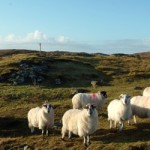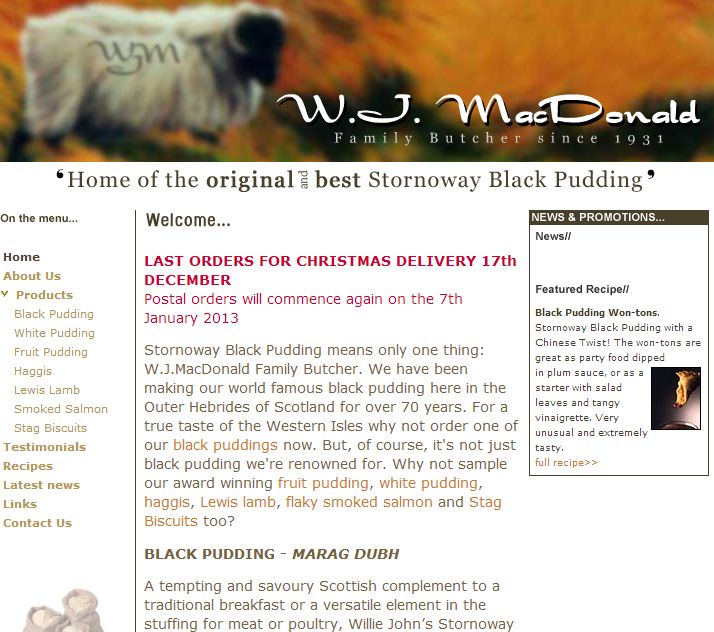 The Scottish Crofting Federation (SCF) questions the low figures quoted for crofting support and urge crofters to speak out in the Common Agriculture Policy (CAP) consultation closing this week.
The Scottish Crofting Federation (SCF) questions the low figures quoted for crofting support and urge crofters to speak out in the Common Agriculture Policy (CAP) consultation closing this week.
“The CAP reform is going from the sublime to the ridiculous” said SCF Chief Executive Patrick Krause. “In the Direct Payments consultation, the Scottish Government is proposing the pitiful rate of 20 to 25 euros per hectare for rough grazing land, where some of the world’s most unique and prized landscape is to be found. We are very surprised and dismayed to see this figure. Over 60% of land in Scotland that is supported by the CAP is rough grazing and it is this type of land that crofters manage in remote and fragile areas. It is being suggested that holdings on higher quality agricultural land get ten times this amount. In other words, the proposal is that less than 40% of agricultural land should take from 85 to 90% of the budget. There is no doubt that the pot is limited, but the conclusion one must draw is that the Scottish Government is prepared to allocate it in a way that keeps the farms on better land happy and crofters take the hit.
“It is not clear where these figures have come from” continued Krause. “The modelling that the James Hutton Institute did to inform the debate on CAP reform suggested that a figure of 27 euros per hectare would enable more crofters to ‘win’ from the reform, than lose from it. It is a bit of a red herring to talk about winners and losers though. If crofters were getting very little and some end up getting marginally more, that is not really winning, is it?, But it is clear that to go below the 30 euros per hectare requested by SCF would mean crofters livelihoods will be endangered, potentially leading to further land abandonment.”
Giving evidence to the Rural Affairs committee of the Scottish Parliament, NFU Scotland suggested that some of the 70 million euro budget earmarked for those rough grazing regions could be used for coupled support. They proposed a 15 euro per hectare basic rate which would be topped up for those on the better land to a figure of around 45 euros per hectare, leaving something in the order of 20 or 21 euro per hectare for the more extensive systems. The NFUS written submission asserted “It is essential that higher area based support payments are delivered to better and more productive land.” It concluded, “Creating a flat support system for the most fragile parts of Scotland, which could see money flood into large areas of very low intensity grazing whilst bleeding critical support from hill farms where grazing levels are more intense, is clearly unacceptable and unjustified.”
Patrick Krause’s response to the same committee on this question was, “A fundamental point that has been raised is the idea that those on better land, who have more choice about what they can do with their business and can rely on a market more because they are able to produce more, somehow deserve more of the public money to support them. As far as I understand it, what is being suggested is that 90% of the pillar1 money is to be spent on supporting farmers in the better areas and 10% is to be spent on those in the poorer areas. That just does not make any sense”.
“We must all speak out against this disparity.” Krause concluded, “If what is being suggested goes through we will see some of our most precious environments and communities abandoned. The consultation ends this Friday so it is urgent that we make our views known”.
// //
Hebrides Today brings you the latest news from the Western Isles




 Welcome
Welcome Commission Is Invited to Meet With Crofting JCC
Commission Is Invited to Meet With Crofting JCC Isle of Harris Rural Manifesto Event
Isle of Harris Rural Manifesto Event CalMac goes Gaelic with social media
CalMac goes Gaelic with social media ALLAN MEETS WITH GRAZINGS COMMITTEES OVER CONCERNS
ALLAN MEETS WITH GRAZINGS COMMITTEES OVER CONCERNS Founding ministers of Hebrides Salvation Army return to celebrate church’s 30th birthday
Founding ministers of Hebrides Salvation Army return to celebrate church’s 30th birthday Double success for Gaelic radio at media awards
Double success for Gaelic radio at media awards SHEPD invites island communities to make plans to weather the storms
SHEPD invites island communities to make plans to weather the storms
Leave a Reply